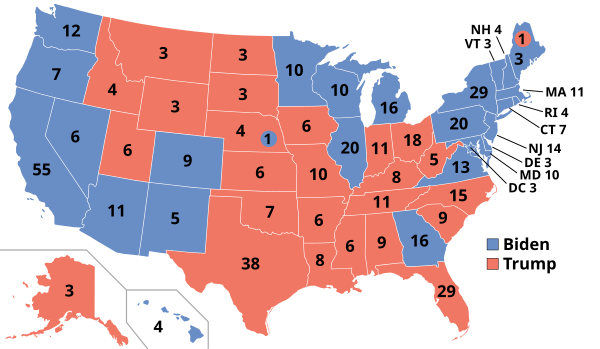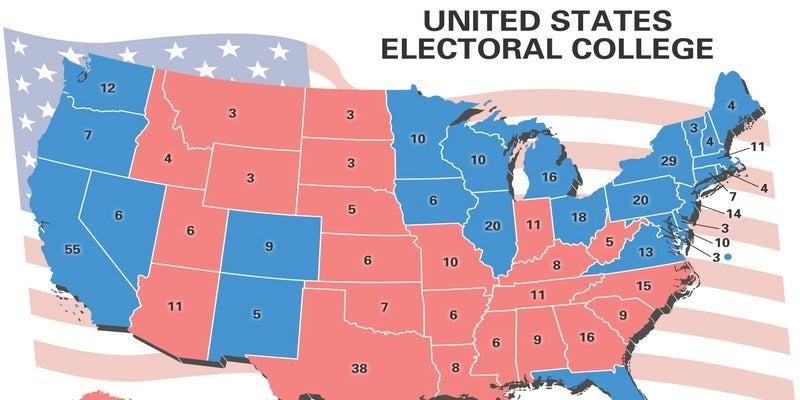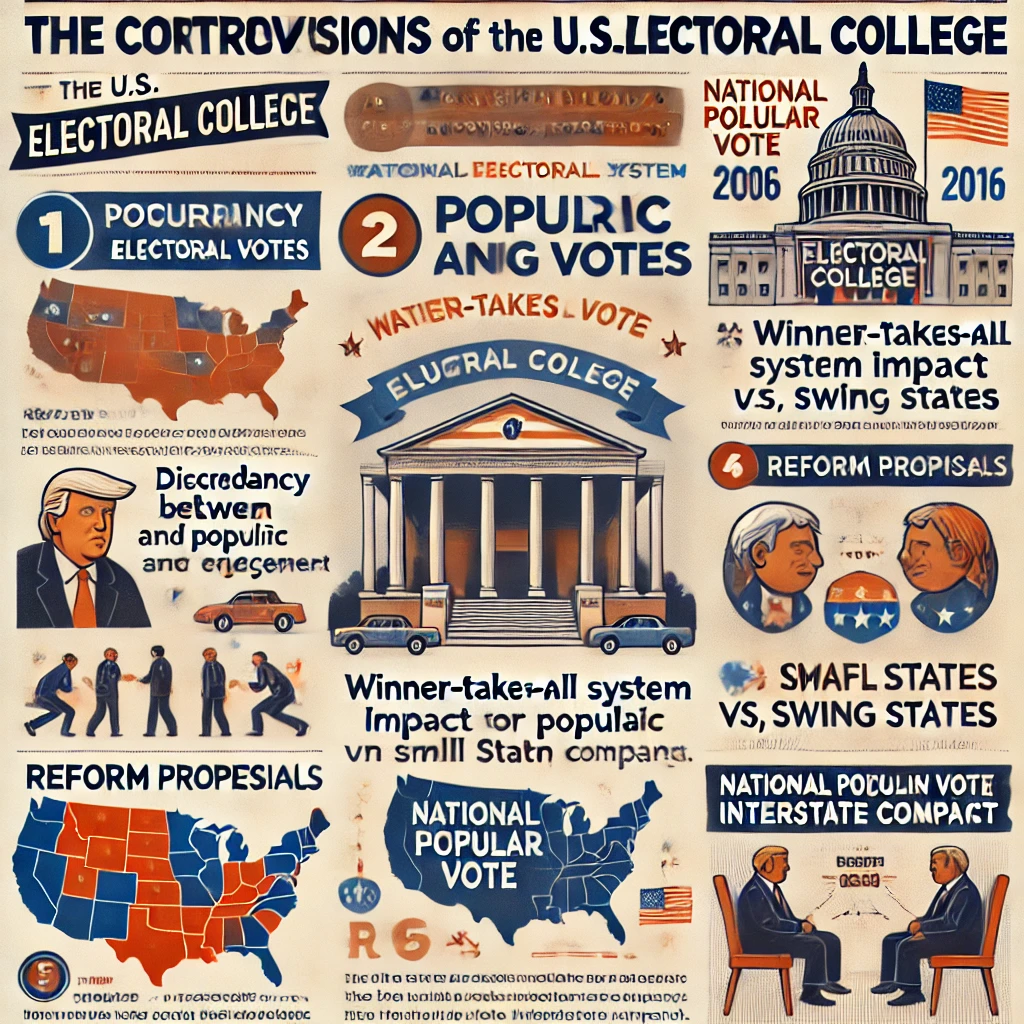“The Electoral College US: Impact and Future Reforms”

The U.S. Electoral College is a pivotal yet often debated feature of the American presidential election system. Established by the Constitution, it aims to balance the influence of populous and less-populous states. Here, we delve into the history, function, controversies, and potential reforms of the Electoral College.
- Historical Origins
The Electoral College was created during the Constitutional Convention of 1787 as a compromise between electing the president by a popular vote and election by Congress. The framers of the Constitution sought a system that balanced democracy with a buffer to prevent direct manipulation and hasty decisions. Thus, they devised a unique method involving state-appointed electors.
Election expert, William C. Kimberling, reflected on the original intent as follows:
“The function of the College of Electors in choosing the president can be likened to that in the Roman Catholic Church of the College of Cardinals selecting the Pope. The original idea was for the most knowledgeable and informed individuals from each State to select the president based solely on merit and without regard to State of origin or political party.”
- How the Electoral College Works

Each state is allocated a number of electors equal to its total representation in Congress (senators and representatives). This results in a total of 538 electors nationwide. To win the presidency, a candidate must secure a majority of at least 270 electoral votes.
On Election Day, citizens cast their votes not directly for the president but for a slate of electors pledged to a specific candidate. These electors then formally cast their votes in December, which Congress counts and certifies in early January.
- Advantages of the Electoral College
Balance Between States: By allocating votes based on congressional representation, smaller states gain a proportionally larger influence compared to a purely popular vote.
Prevention of Regional Dominance:
The system compels candidates to seek support across diverse states, ensuring broader appeal and unity.
Stability in Outcomes: The Electoral College can amplify the margin of victory, lending an aura of decisiveness to election results.
- Criticisms and Controversies

Popular Vote Discrepancies: A significant critique is that a candidate can win the presidency without winning the popular vote, as seen in the 2000 and 2016 elections. This leads to questions about the democratic legitimacy of outcomes.
Winner-Takes-All System: Most states allocate all their electoral votes to the candidate who wins the majority in that state. This can marginalize voters in “safe” states, where one party consistently wins.
Focus on Swing States: Candidates often focus their campaigns on a handful of competitive states, leaving many regions overlooked.
- Calls for Reform
The Electoral College has faced growing calls for change. Proposals include:
National Popular Vote Interstate Compact (NPVIC): This agreement among states pledges their electors to the winner of the national popular vote, but it only takes effect when states totaling 270 electoral votes join.
Proportional Allocation: Allocating electoral votes in proportion to the state’s popular vote could make elections more representative.
Abolition: A full shift to a national popular vote would require a constitutional amendment, a challenging feat given the need for broad support.
- The Current Debate and Future Outlook
With the 2024 elections intensifying discussions around democracy and representation, the Electoral College remains a hot topic. Proponents argue it preserves federalism and balances interests across the nation, while critics view it as outdated and misaligned with modern democratic ideals.
Conclusion
The Electoral College continues to be an integral yet polarizing aspect of U.S. presidential elections. Whether through reform or continued defense of the status quo, its future will shape how Americans choose their leaders for years to come. As public sentiment and legislative efforts evolve, understanding its role, challenges, and potential changes is more relevant than ever.
References
- “Election Administration at State and Local Levels”. National Conference of State Legislatures. Archived from the original on October 25, 2020. Retrieved March 21, 2020.
- ^ Jump up to:a b c “Elections & Voting”. whitehouse.gov. Retrieved March 21, 2020 – via National Archives.
- ^ Dixon, Robert G. Jr. (1950). “Electoral College Procedure”. The Western Political Quarterly. 3 (2): 214–224. doi:10.2307/443484. JSTOR 443484.
- ^ Edwards III, George C. (2011). Why the Electoral College is Bad for America (Second ed.). New Haven and London: Yale University Press. ISBN 978-0-300-16649-1.
- “Article II”. LII / Legal Information Institute. Retrieved March 7, 2024.
- Karimi, Faith (October 10, 2020). “Why the Electoral College has long been controversial”. CNN. Retrieved December 31, 2021.
External links
Wikisource has the text of the 1905 New International Encyclopedia article “Electoral College”.
- The American Presidency Project (UC Santa Barbara: 52,000+ Presidential Documents)
- Electoral College Box Scores
- Teaching about Presidential Elections Archived August 23, 2021, at the Wayback Machine
- All the maps since 1840 by counties (in French)
- Dave Leip’s Atlas of U.S. Presidential Elections
- History of U.S. Presidential Elections: 1789–2004
- The Electoral College by the National Conference of State Legislatures
- The Electoral College by the National Archives and Records Administration

1 comment